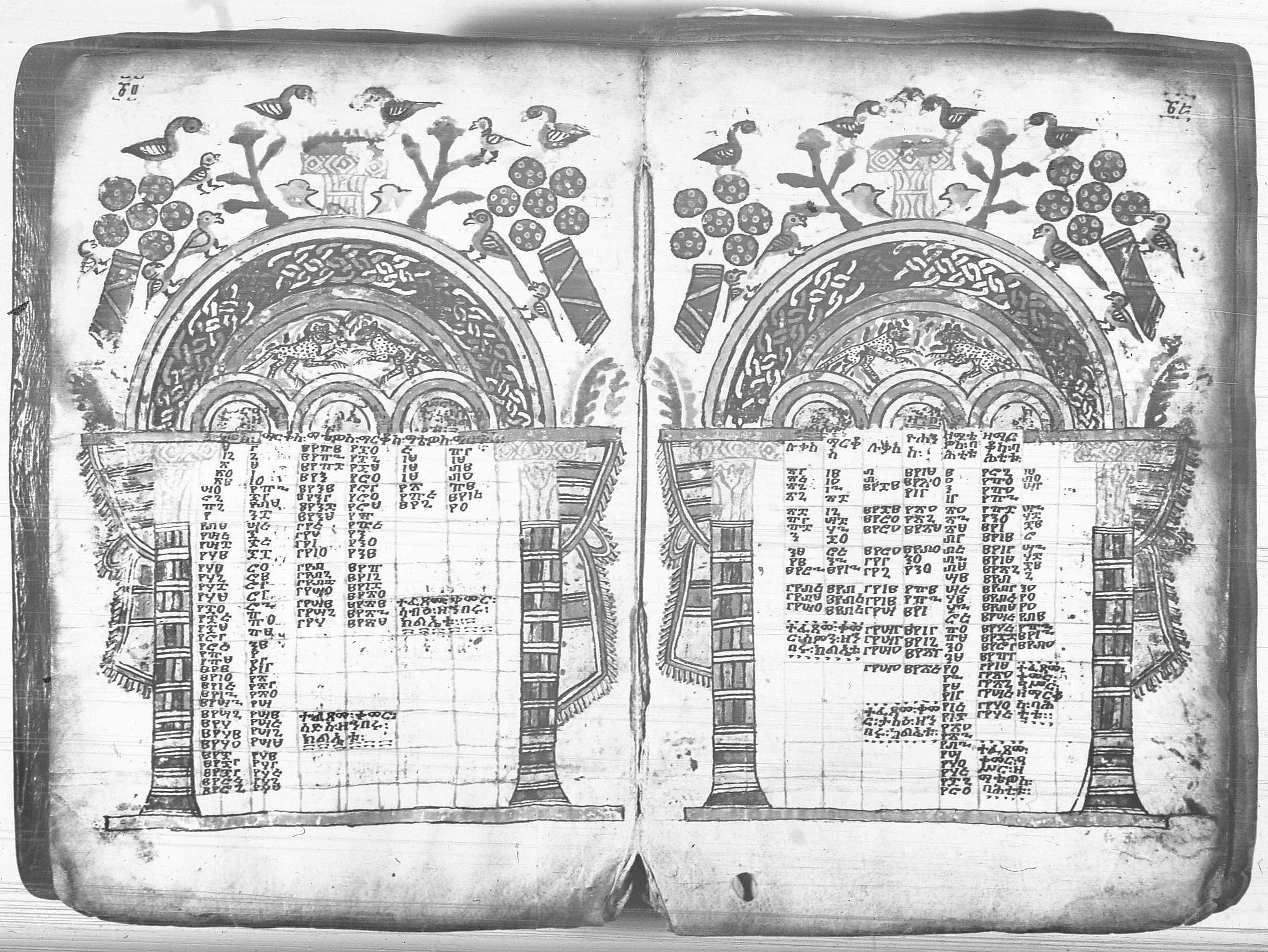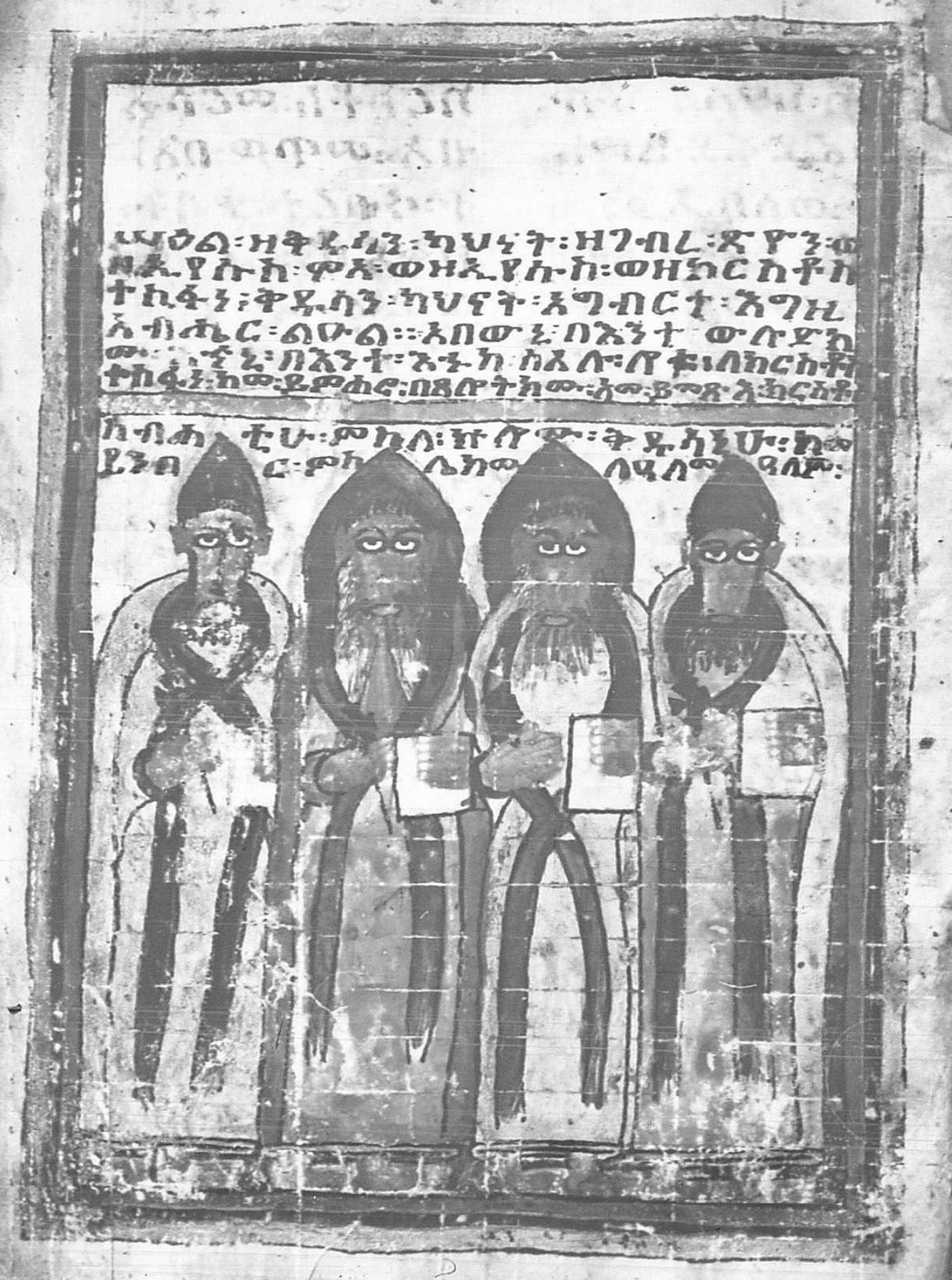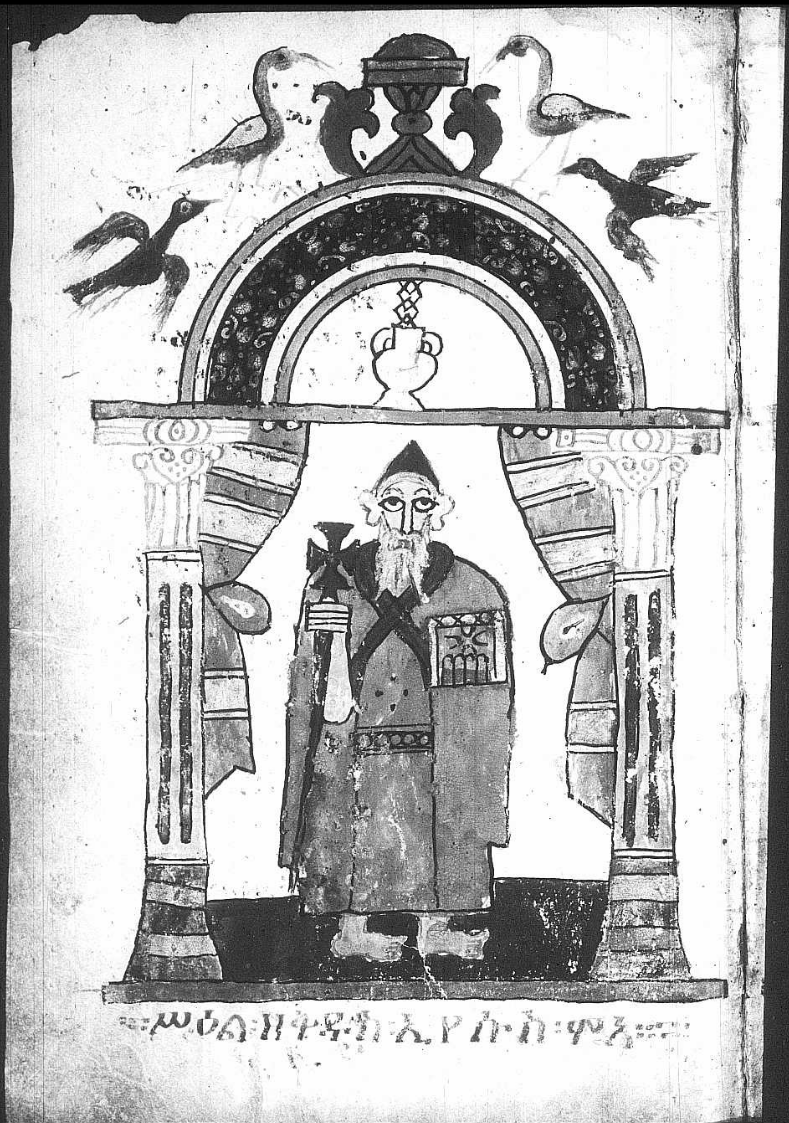Early Miniatures Of Ethiopians
Early Miniatures of Ethiopians

On this day seventy-five years ago, an early-14th century illuminated gospel book arrived at the National Library of Ethiopia. During the previous six centuries, it had resided at the famous monastery of Ḥayq Esṭifānos, having been commissioned and copied during the tenure of one of its early abbots, Krestos Tasfāna.
Among the many miniatures in this manuscript (NL MS 28), one image depicts four early leading figures of the monastery: its founder Iyasus Mo’a, his brother Gabra Ṣeyon, and two slightly later abbots, (Za-)Iyasus and Krestos Tasfāna.
Illuminations of this type are very rare in the tradition. This is among the earliest surviving images of indigenous people in an Ethiopian manuscript, likely second only to an image found in another gospel book from Ḥayq: EMML 1832, the famed gospels of Iyasus Mo’a, dated to 1280/1 CE. In this manuscript, a miniature of the saint appears towards the beginning of the book.
Illustrations of manuscript commissioners or donors are known elsewhere, especially in more recent times. However, the unusualness of the two earliest known Ethiopian miniatures of this type being from the same place is unlikely to be total coincidence, and it may well be that Krestos Tasfāna was trying to imitate his predecessor.
While NL MS 28 is the oldest book in the National Library today, the institution possesses around 800 manuscripts in total, mostly written in Ge’ez, Amharic, and Arabic. HMML preserves microfilm copies of more than 160 of these.






